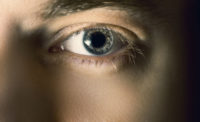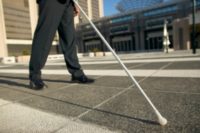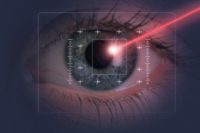Women must act to avoid vision loss

 Every year, more women than men are diagnosed with eye diseases and conditions such as cataracts, dry eye, Fuchs’ dystrophy, glaucoma, macular degeneration, diabetic retinopathy and Sjögren’s syndrome.
Every year, more women than men are diagnosed with eye diseases and conditions such as cataracts, dry eye, Fuchs’ dystrophy, glaucoma, macular degeneration, diabetic retinopathy and Sjögren’s syndrome.
The “VisionProblems in the U.S.” study from Prevent Blindness America (PBA) and the National Eye Institute (NEI) shows that of the more than 3.6 million Americans age 40 and older who suffer from visual impairment, including blindness, 2.3 million are women.
Women are more susceptible to vision issues due to longevity as well as hormonal factors, according to the NEI. To educate the public, Prevent Blindness America has designated April as Women’s Eye Health and Safety Month.
“Of course, both men and women need to take the necessary steps today to keep their eyes healthy in the future," said Ruth D. Williams, M.D., president of the American Academy of Ophthalmology. "Because women have more risk of vision loss than do men, and because women have different risks than men, we want to be sure they pay heightened attention to saving their sight."
Prevent Blindness America provides tips for women to keep their eyes healthy:
Get an Eye Exam - All women should make regular eye exams part of their health routine. PBA recommends everyone receive a comprehensive eye exam by age 40, if not earlier, and follow up care as recommended by an eye care professional.
Know Your Family History - Genetics plays a key role in eye disease. Research your family’s health history and notify your eye care professional of any eye diseases that run in the family.
Eat Healthy - A diet rich in beta carotene, lutein, zeaxanthin, zinc and omega-3 fatty acids can also help guard against vision loss from eye disease.
Take Supplements - Antioxidants have been shown to actually reduce the progression of some eye illnesses, including AMD. Vitamin A, riboflavin (vitamin B2), vitamin C and zinc are good sources to help maintain eye health. Consult your physician before taking any vitamins or supplements.
Quit Smoking - Smoking, even second-hand smoke, increases the risk of eye disease.
Wear UV Eye Protection - When venturing outdoors, PBA recommends wearing brimmed hats in conjunction with UV-rated sunglasses (labeled: absorbs 99-100 percent of UV-A and UV-B rays). UV rays are extremely dangerous to the eyes and have been linked to the development of cataracts and AMD later in life.
For more information on women’s eye health, including fact sheets on eye diseases, pregnancy and vision, and the safe use of cosmetics, call 1-800-331-2020.
Looking for a reprint of this article?
From high-res PDFs to custom plaques, order your copy today!







